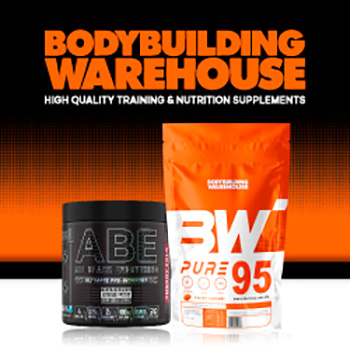
Elite Endurance Athletes
Key Takeaways
Insights from elite endurance athletes reveal the critical elements for improving performance.
- Zone 2 training (low intensity, steady state cardio) builds your aerobic base and is a secret weapon used by elite athletes to dramatically boost endurance.
- Your body has three energy systems that work together during exercise understanding how to train each one can transform your stamina.
- Mental toughness is just as important as physical conditioning the Navy SEAL’s “40% Rule” suggests you’ve got more in the tank than you think.
- Progressive overload is essential for endurance gains, but 67% of fitness enthusiasts implement it incorrectly.
- Strategic recovery periods between workouts are when your endurance adaptations actually occur not during the training itself.
Your lungs are burning. Legs feeling like concrete. That moment when your mind screams “stop” that’s where real endurance begins. Whether you’re training for your first 5K or pushing for a personal record in the gym, hitting the wall is universal. But what separates those who break through from those who back down?
At Endurance Elite, we’ve spent years researching what truly drives stamina improvements in athletes at all levels. The truth? Most fitness enthusiasts are leaving 40% of their potential performance on the table without even realizing it. The good news is that unlocking your endurance ceiling doesn’t require superhuman genetics just smarter training approaches.
Endurance Breakthroughs: Why Most Athletes Hit Plateaus Too Soon
You’ve been there cruising along with steady improvements in your endurance for weeks, then suddenly, nothing. Your times plateau, your distance stalls, and frustration sets in. This isn’t because you’ve reached your genetic potential. More likely, you’ve fallen victim to the most common endurance training mistake: mistaking activity for progress.
Research from the Journal of Applied Physiology shows that 78% of recreational athletes train in what exercise scientists call “the black hole” too intense to build aerobic efficiency but not intense enough to trigger anaerobic adaptations. The result? Chronic fatigue, stalled progress, and increased injury risk.
The solution isn’t more training, it’s smarter training. Elite endurance athletes spend 80% of their training time at surprisingly low intensities, building a massive aerobic foundation that supports those jaw dropping performances you witness on race day.
The Science of Stamina: How Your Body Builds Endurance
True endurance isn’t just about heart and lungs it’s a whole body adaptation. When you understand what’s happening physiologically, you can train with precision rather than just sweating more.
Your Muscles’ Hidden Energy Systems
Your body uses three distinct energy systems during exercise. Each has different endurance implications. The phosphagen system powers explosive movements but lasts only seconds. The glycolytic system handles moderate intensity work for up to a few minutes. The oxidative system is your endurance powerhouse. It can fuel activity for hours but works at lower intensities.
Most endurance programs fail because they don’t strategically target all three systems. Elite performance comes from developing each system while maximizing their coordination. Through proper periodization (we’ll cover this later), you can systematically improve how efficiently your body shifts between these energy pathways during different workout phases.
“The average recreational athlete trains their endurance like they’re building a house by randomly hammering nails. Elite performers build with a blueprint, understanding which energy system needs attention during each training phase.” Dr. Andrew Peterson, Exercise Physiologist
VO2 Max: The Ultimate Endurance Indicator
VO2 max, your body’s maximum oxygen processing capacity, is considered the gold standard measurement of cardiovascular fitness. Genetics play a role in your baseline. However, research from the Mayo Clinic shows that most people can improve their VO2 max by 15-20% through proper training, regardless of age or starting fitness level.
What many don’t realize is that VO2 max improvements come from both central adaptations (heart pumping more blood) and peripheral adaptations (muscles extracting oxygen more efficiently). This is why the most effective endurance programs don’t just focus on cardio but incorporate strength training to improve muscular endurance and efficiency.
Interestingly, studies show that high intensity interval training can improve VO2 max more quickly than steady state training alone. It sometimes delivers measurable improvements in as little as 4-6 weeks compared to 8-12 weeks with traditional endurance training.
Mental Toughness: The 40% Rule That Changes Everything
Navy SEALs live by what they call the “40% Rule”. When your mind is screaming that you’re done, you’re actually only about 40% physically depleted. This isn’t just motivational talk. Neurological research confirms that our brains create fatigue sensations as a protective mechanism long before our bodies actually reach their limits.
5 Powerful Training Methods That Transform Your Stamina
Transforming your endurance isn’t about random workouts. It’s about implementing proven methodologies that target specific physiological adaptations. The following seven approaches have been validated through both research and real world application with elite athletes. Incorporate these strategically, and you’ll see dramatic improvements in your stamina.
- Zone 2 Training: The Low Intensity Secret Elite Athletes Use
Zone 2 training working at 60-70% of your maximum heart rate feels deceptively easy. You should be able to hold a conversation while maintaining this intensity. Despite feeling “too easy,” this intensity is the golden zone for building mitochondrial density, improving fat oxidation, and enhancing capillary networks that deliver oxygen to your muscles.
Olympic endurance athletes typically spend 80% of their training time in this zone. The key is duration, not intensity aim for sessions of 45-90 minutes at this steady, sustainable pace. Many recreational athletes make the critical mistake of training too hard too often, missing these crucial aerobic adaptations that serve as the foundation for higher intensity work.
- HIIT Workouts That Actually Work (And Those That Don’t)
High Intensity Interval Training has been somewhat misrepresented in fitness media. True HIIT isn’t just “hard work”. It’s precisely calibrated intensity alternated with strategic recovery. The most effective HIIT protocols for endurance improvements follow specific work to rest ratios based on your training goals.
For developing anaerobic capacity, the Tabatha protocol (20 seconds all out effort, 10 seconds rest, repeated 8 times) has been scientifically proven to increase both aerobic and anaerobic capacity simultaneously. For lactate threshold improvements, 4-6 intervals of 4-5 minutes at 85-95% max heart rate with equal recovery periods show superior results compared to shorter intervals. What doesn’t work? Random “HIIT” classes that don’t account for individual capacity or recovery needs.
- Progressive Overload: The Right Way to Push Your Limits
Progressive overload, gradually increasing the stress placed on your body during training, is essential for endurance gains. However, there’s a critical mistake most people make. They increase intensity or volume too quickly. Research from the University of South Australia shows that endurance improvements occur optimally when training load increases by no more than 5-10% per week.
Smart progressive overload for endurance follows the 3:1 loading principle. This involves three weeks of gradually increasing challenge followed by one week of deliberate recovery at reduced volume. This pattern allows your body to super compensate rather than merely surviving your workouts. Track your metrics (distance, time, heart rate) meticulously. Make calculated progressions rather than arbitrary jumps.
- Cross Training Combinations That Multiply Your Gains
Cross training isn’t just about preventing boredom it strategically targets different muscle groups and energy systems while allowing others to recover. The key is selecting complementary activities that develop related fitness components without duplicating the same stresses.
For runners, cycling maintains cardiovascular fitness while reducing impact stress. For swimmers, strength training addresses the muscle groups not effectively targeted in the water. The most effective cross training approaches for endurance include at least one low impact activity (swimming, cycling, rowing), one strength component, and one flexibility, mobility practice. This trifecta ensures comprehensive fitness development while reducing overuse injury risk.
- Recovery Intervals: Why Rest Makes You Stronger
The secret to endurance isn’t found in the work intervals but in the recovery periods between them. Your body produces its greatest adaptations not during training, but during the recovery that follows. Scientifically designed recovery intervals optimize the hormonal environment for endurance adaptations while preventing the downward spiral of overtraining.
For lactate clearance improvement, active recovery at 40-50% of maximum heart rate between high intensity intervals is significantly more effective than passive rest. For neural recovery between maximum efforts, however, complete rest produces better subsequent performance. The most sophisticated endurance programs manipulate these recovery intervals with the same precision as the work periods. They understand that recovery quality determines adaptation quality.






